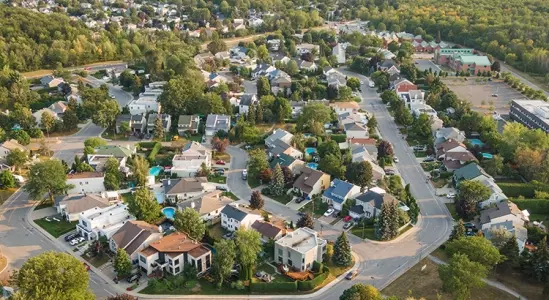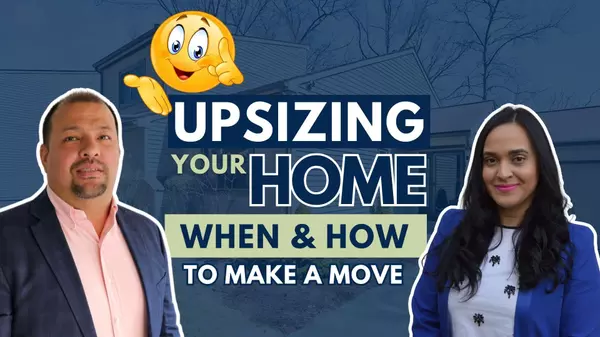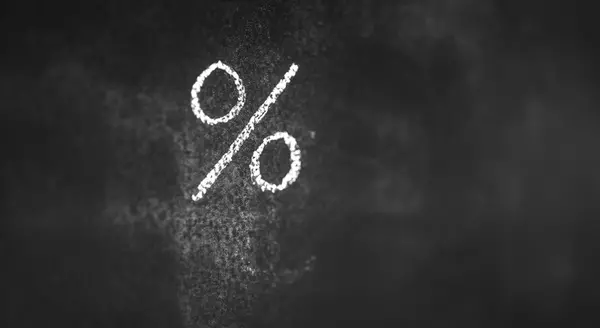
What’s Causing Ongoing Home Price Appreciation?
If you’re thinking about making a move, you probably want to know what’s going to happen to home prices for the rest of the year. While experts say price growth will moderate due to the shifting market, ongoing appreciation is expected. That means home prices won’t fall. Here’s a look at two key reasons experts forecast continued price growth: supply and demand.While Growing, Housing Supply Is Still LowEven though inventory is increasing this year as the market moderates, supply is still low. The graph below helps tell the story of why there still aren’t enough homes on the market today. It uses data from the Census to show the number of single-family homes that were built in this country going all the way back to the 1970s.The blue bars represent the years leading up to the housing crisis in 2008. As the graph shows, right before the crash, homebuilding increased significantly. That’s because buyer demand was so high due to loose lending standards that enabled more people to qualify for a home loan.The resulting oversupply of homes for sale led to prices dropping during the crash and some builders leaving the industry or closing their businesses – and that led to a long period of underbuilding of new homes. And even as more new homes are constructed this year and in the years ahead, this isn’t something that can be resolved overnight. It’ll take time to build enough homes to meet the deficit of underbuilding that took place over the past 14 years.Millennials Will Create Sustained Buyer Demand Moving ForwardThe frenzy the market saw during the pandemic is because there was more demand than homes for sale. That drove home prices up as buyers competed with one another for available homes. And while buyer demand has moderated today in response to higher mortgage rates, data tells us demand will continue to be driven by the large generation of millennials aging into their peak homebuying years (see graph below):Odeta Kushi, Deputy Chief Economist at First American, explains: “. . . millennials continue to transition to their prime home-buying age and will remain the driving force in potential homeownership demand in the years ahead.”That combination of millennial demand and low housing supply continues to put upward pressure on home prices. As Bankrate says:“After all, supplies of homes for sale remain near record lows. And while a jump in mortgage rates has dampened demand somewhat, demand still outpaces supply, thanks to a combination of little new construction and strong household formation by large numbers of millennials.”What This Means for Home PricesIf you’re worried home values will fall, rest assured that experts forecast ongoing home price appreciation thanks to the lingering imbalance of supply and demand. That means home prices won’t decline.Bottom LineBased on today’s factors driving supply and demand, experts project home price appreciation will continue. It’ll just happen at a more moderate pace as the housing market continues its shift back toward pre-pandemic levels.

¿Qué está provocando la continua apreciación del precio de las casas?
Si está pensando en mudarse, probablemente quiera saber qué va a pasar con los precios de las casas durante el resto del año. Si bien los expertos dicen que el aumento de los precios se moderará debido al cambio en el mercado, se espera una apreciación continua. Eso significa que los precios de las casas no caerán. Aquí hay un vistazo a dos razones clave por las que los expertos pronostican un aumento continuo de los precios: la oferta y la demanda.Si bien está aumentando, la oferta de la vivienda sigue siendo bajaA pesar de que el inventario está aumentando este año a medida que el mercado se modera, la oferta sigue siendo baja. La siguiente gráfica ayuda a contar la historia de por qué todavía no hay suficientes casas en el mercado hoy. Utiliza los datos del Censo para mostrar el número de viviendas unifamiliares que se construyeron en este país desde la década de 1970.Las barras azules representan los años previos a la crisis de la vivienda en 2008. Como muestra la gráfica, justo antes del desplome, la construcción de viviendas aumentó significativamente. Esto se debe a que la demanda de los compradores era tan alta debido a las normas flexibles de los préstamos que permitieron que más personas calificaran para un préstamo hipotecario.El exceso de oferta de casas en venta resultante llevó a que los precios cayeran durante la crisis y algunos constructores abandonaron la industria o cerraron sus negocios, y eso llevó a un largo período de subconstrucción de casas nuevas. E incluso a medida que se construyen más casas nuevas este año y en los próximos años, esto no es algo que se pueda resolver de la noche a la mañana. Tomará tiempo construir suficientes casas para satisfacer el déficit de subconstrucción que tuvo lugar en los últimos 14 años.Los millennials crearán una demanda continua de compradores en el futuroEl frenesí que vio el mercado durante la pandemia se debe a que había más demanda que casas en venta. Eso hizo que los precios de las casas subieran a medida que los compradores competían entre sí por las casas disponibles. Y aunque la demanda de los compradores se ha moderado hoy en respuesta a las tasas hipotecarias más altas, los datos nos muestran que la demanda continuará siendo impulsada por la gran generación de los millennials que entran en sus años cumbre de compra de la vivienda (vea la gráfica a continuación):Odeta Kushi, Economista Principal Adjunta de First American, explica: “… los millennials continúan haciendo la transición a su edad principal de compra de la vivienda y seguirán siendo la fuerza impulsora en la demanda potencial de la propiedad de la vivienda en los próximos años”.Esa combinación de demanda milenaria y oferta de vivienda baja continúa ejerciendo una presión al alza sobre los precios de las casas. Como dice Bankrate:“Después de todo, el suministro de casas en venta se mantiene cerca de mínimos históricos. Y aunque un salto en las tasas hipotecarias ha disminuido un poco la demanda, la demanda aún supera la oferta, gracias a una combinación de poca construcción y una fuerte formación de hogares por parte de un gran número de millennials”.Que significa esto para los precios de las casasSi le preocupa que el valor de las viviendas caiga, tenga la seguridad de que los expertos pronostican una apreciación continua del precio de las casas gracias al persistente desequilibrio entre la oferta y la demanda. Eso significa que los precios de las casas no van a caer.En conclusión,Basado en los factores actuales que impulsan la oferta y la demanda, los expertos proyectan que la apreciación del precio de la vivienda continuará. Simplemente sucederá a un ritmo más moderado a medida que el mercado de la vivienda continúe su cambio hacia los niveles pre-pandémicos.

Think Home Prices Are Going To Fall? Think Again
Over the last two years, the rate of home prices appreciated at a dramatic pace. While that led to incredible equity gains for homeowners, it’s also caused some buyers to wonder if home prices will fall. It’s important to know the housing market isn’t a bubble about to burst, and home price growth is supported by strong market fundamentals.To understand why price declines are unlikely, it’s important to explore what caused home prices to rise so much recently, and where experts say home prices are headed. Here’s what you need to know.Home Prices Rose Significantly in Recent YearsThe graph below uses the latest data from CoreLogic to illustrate the rise in home prices over the past year and a half. The gray bars represent the dramatic increase in the rate of home price appreciation in 2021. The blue bars show home prices are still rising in 2022, but not as quickly:You might be asking: why did home prices climb so much last year? It’s because there were more buyers than there were homes for sale. That imbalance put upward pressure on home prices because demand was extremely high, and supply was record low.Where Experts Say Prices Will Go from HereWhile housing inventory is increasing and buyer demand is softening today, there’s still a shortage of homes available for sale. That’s why the market is seeing ongoing price appreciation. Mark Fleming, Chief Economist at First American, explains it like this:“. . .we’re still well below normal levels of inventory and that’s why even with the pullback in demand, we still see house prices appreciating. While there is more inventory, it’s still not enough.”As a result, experts are projecting a more moderate rate of home price appreciation this year, which means home prices will continue rising, but at a slower pace. That doesn’t mean prices are going to fall. As Selma Hepp, Deputy Chief Economist at CoreLogic, says:“The current home price growth rate is unsustainable, and higher mortgage rates coupled with more inventory will lead to slower home price growth but unlikely declines in home prices.”In other words, even with higher mortgage rates, moderating buyer demand, and more homes for sale, experts say home price appreciation will slow, but prices won’t decline.If you’re planning to buy a home, that means you shouldn’t wait for home prices to drop to make your purchase. Instead, buying today means you can get ahead of future price increases, and benefit from the rise in prices in the form of home equity.Bottom LineHome prices skyrocketed in recent years because there was more demand than supply. As the market shifts, experts aren’t forecasting a drop in prices, just a slowdown in the rate of price growth. To understand what’s happening with home prices in our area, let’s connect today.
Categories
Recent Posts










